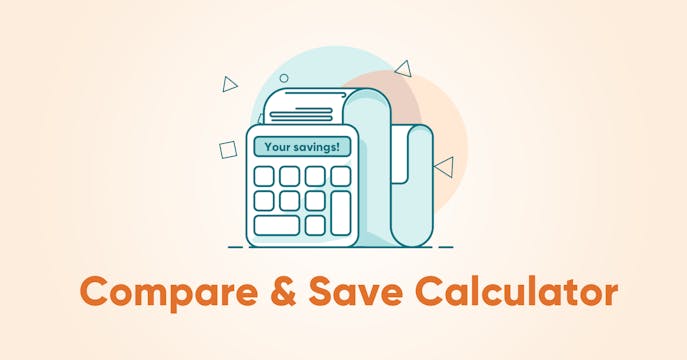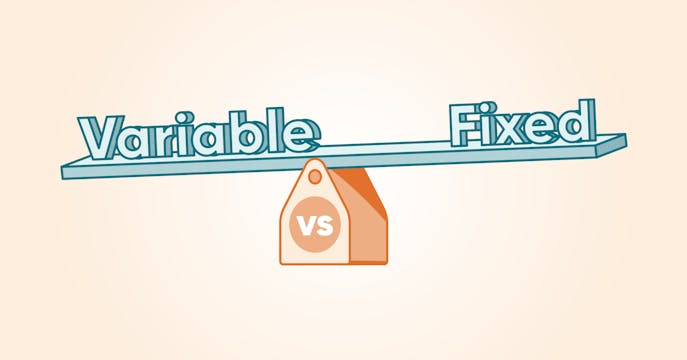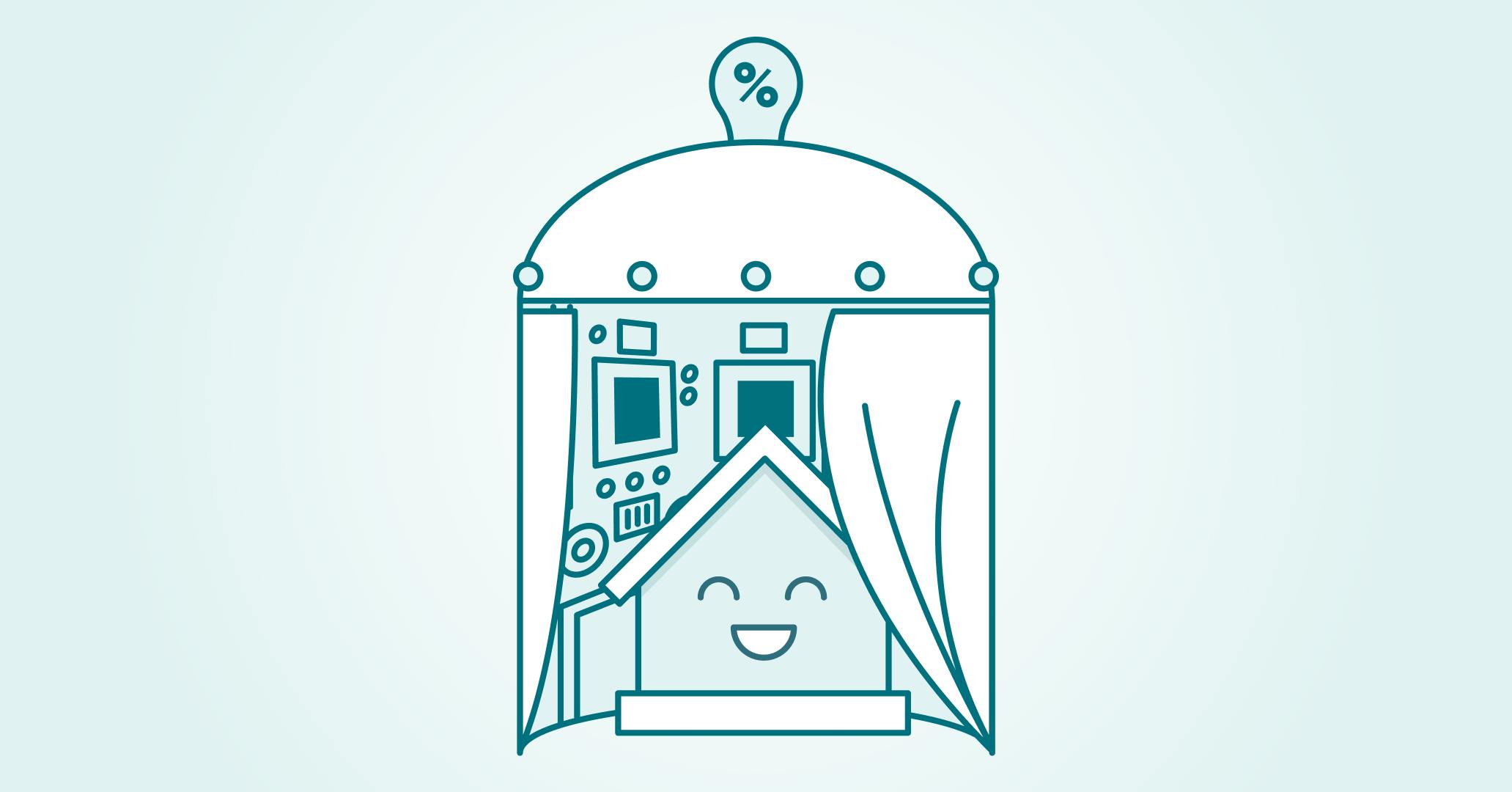How are mortgage rates set?
Trends, influences, real numbers.
Mortgage interest rates may seem mysterious and crafty. Here's how they work, and how you can keep track of what they're doing (to a point).
Let's pull back the curtain — what wizardry is behind mortgage rates?
Are mortgage interest rates going up? Going down? Staying put?
It can be an all-consuming obsession (well, it is for us!). Rates can substantially impact Canadian home buyers — in getting a mortgage, affording a mortgage, paying off a mortgage ... you get the idea. Even a quarter of a percentage, either way, could save thousands or cost more over the life of your mortgage.
Where do rates come from? What influences mortgage rates? Why can't they just always stay low? Interest rates are usually affected by several economic growth factors, nationally and globally, but can be taken down to primary sources to keep track of them.
There are two types of mortgage rates: variable and fixed. Here's how they work.
What is a variable mortgage rate?
A variable mortgage rate is a floating interest rate for home loans set according to bank prime rates. Because they involve a risk of change, variable mortgage rates tend to be lower than fixed mortgage rates.
With a variable rate, your interest costs are subject to change during your mortgage term:
- Affects your payment amount if you have a floating payment Adjustable-Rate Mortgage (ARM)
- Affects your amortization and mortgage balance if you have a static payment Variable-Rate Mortgage with a big bank (VRM)
Variable rate terms are usually offered as a standard 5-year term, as this term length is the most cost-efficient for lenders, considering the potential for change over a term. If you need to break your mortgage mid-term, a shorter variable-rate term may be offered for the remaining period.
What is a fixed mortgage rate?
A fixed mortgage rate is set for the duration of your mortgage term. With a fixed rate, your interest rate and payments won't change during your mortgage term.
Fixed rates can have terms ranging from 3 months to 10 years (or more). However, a 5-year fixed-rate mortgage term is considered the standard, and this term typically offers the most competition between mortgage lenders for offering their lowest advertised rates.
Fixed rates tend to be higher than variable rates because you're paying a bit more for budget security.
How does the Bank of Canada influence variable mortgage rates?
The Bank of Canada sets the 'target' for the overnight lending rate, which is the interest rate banks charge each other to cover their short-term daily transactions.
This benchmark rate is Canada's main guiding policy rate. It influences the prime interest rate banks charge their best customers.
When the BoC changes its policy rate, it signals to lenders that it wants them to change their prime rates — which they usually do (there have been rare occasions when some banks didn't follow policy rate changes right away), passing on increases or decreases directly to their clients.
Banks offer many floating prime rate products, such as variable-rate mortgages (ARMs and VRMs) and lines of credit (such as HELOCs).
How are variable mortgage rates set?
Variable mortgage rates are set according to floating lender prime rates (which change along with BoC policy rates).
However, lenders will set a variable-rate discount off of their prime rate to compete with other lenders, based on their mortgage-lending bottom lines and what the market will bear to attract business.
The variable rate you sign up for includes your lender discount, which stays constant during your 5-year term, even though the rate itself may change.
How do government bonds influence fixed mortgage rates?
Banks buy bonds from the Bank of Canada as a low-maintenance (less costly) source of fixed-interest income. They also use fixed mortgage rates as an income source, but mortgages are higher maintenance compared to bonds (it costs more to operate mortgage loans).
Fixed mortgage rates compete on similar terms with bonds to attract the capital the lender needs (e.g. 2-year, 5-year), so lenders set their fixed rates for mortgages at a higher point than less-costly bonds to keep these two income sources on par.
How are fixed mortgage rates set?
Fixed mortgage rates are set higher than bond yields at a (typical) spread relationship of 1-2%, using the 5-year yield as the industry benchmark.
The 5-year fixed rate mortgage is the standard term that banks compete on, and so watching 5-year bond yields can offer a good indication of where fixed rates may be going.
- When 5-year bond yields are up, it usually means fixed rates will go up if the trend continues.
- When 5-year bond yields are down, it usually means fixed rates will also come down, though banks will react more slowly to decrease their rates.
- Bonds trade daily, so the 5-year mortgage rates can move at any time.
- Mortgage rates don't move lockstep with bond yields but have a spread-relationship that can help determine where rates may be headed.
When you sign up for a fixed mortgage rate, it's yours for your full term and won't change until it's time to renew.
When rates go up, what does it mean for getting a mortgage?
When interest rates increase, it costs more to borrow money. If you're in the market for a house, higher rates will impact how much you'll pay each month for your mortgage or how much house you'll be able to afford.
For example, if you need a $200,000 mortgage, at 5% interest, your monthly payment would be $1,163.21 (for interest and principal) for 25 years (your amortization).
But if your mortgage rate was 1% higher, at 6%, your mortgage payments would be $1,279.62 per month. Bump the rate to 7%, and your monthly payments are now over $1,400. So, when interest rates go up, the trend is to save your money and spend less, especially on big purchases, such as a home or property.
Why do rates go up?
The BoC's primary purpose is to keep inflation in check, using a 2.0% target for the CPI basket of price-change measures it uses. It moves to raise its policy rate when it believes the economy is in danger of too-rapid growth that may lead to higher inflation.
For example, surging economic growth could cause a cycle of rising prices and wages and contribute to inflationary pressures, which can cause rates to go even higher to put the brakes on an 'unnatural' state of supply and demand.
So, the BoC aims to moderate growth and volatility with its policy rate to help keep multiple economic factors in check.
What happens when rates go down?
The simple answer is, of course, that the cost of borrowing goes down. Buying a home or property with a mortgage becomes more inviting because lower interest rates mean lower monthly payments or more 'house' that you'll be able to afford.
But, there's a catch. Lower rates are an unmistakable signal from the central bank that the economy is slowing down (job losses? wage cuts?), and people aren't buying enough big-ticket items.
When rates are lowered, it can help spur economic growth by making it more attractive for businesses and consumers to borrow.
The caution comes with the potential to allow low rates for too long. The extended economic stimulus may again risk igniting inflation and, therefore, cause rates to rise.
Correctly forecasting the balance of risks between stimulating or cooling our economy is the central bank's most difficult and most important task.
How often does the BoC 'set' its rate in Canada?
Affecting lenders' prime rates and, therefore, your variable-rate mortgage products, the Bank of Canada schedules eight interest rate announcement dates each year:
- Late January
- Early March
- Mid-April
- Late May/Early June
- Mid-July
- Early September
- Mid-October
- Early December
Pause, hike or drop?
At its rate dates, the central bank will either move its policy rate up or down or keep it the same — and offer comments on the economic conditions and influences that instructed its decision. It will also indicate a direction for future rate decisions based on these sentiments.
It can take action between these scheduled times — but only under extraordinary circumstances.
The U.S. Federal Reserve also sets rates eight times a year. The Bank of England sets rates 12 times a year.
What is a mortgage stress test rate?
Regardless of the actual mortgage rate you receive from your lender, you'll need to qualify at a higher rate determined by the federal government for your home purchase — most insured and uninsured renewal switches get a pass.
The current stress test rate is a minimum of 5.25% or 2.0% higher than your contract rate, whichever is greater.
This requirement was set in place in 2019 to help ensure Canadian homeowners can still afford their payments if rates go up.
Keep up with the latest mortgage rule changes that may affect your home affordability.
Thinking about which rate to set for your mortgage?
Hold your best rate for up to 4 months while you mull it over.
At True North Mortgage, your expert mortgage broker can offer your best qualifying rates (thanks to our volume discount) and great mortgage advice. Unified, salaried, and highly-trained — we'll help you sort out your options and which rates or mortgage products will be the best for your situation.
Our in-house lender, THINK Financial, offers industry-best rates that are lower on average compared to big banks and other mortgage finance corporation (MFC) lenders.
Holding your best rate for as long as the lender will allow (can be up to 4 months) will protect you against increases while you make home buying or mortgage decisions.
Check out our current great rates here. Then, give us a shout — online, over the phone or at one of our store locations. Anywhere you are in Canada, we're here for you.
You can also click on our chatbot, Morgan, to ask questions and be quickly connected to one of our brokers!
We pull back the curtain to get your best rate.
more mortgage magic

2025 Mortgage Rate Forecast
Continually updated. Are rates going down or up in 2025? Get insights from CEO Dan Eisner into… Learn More

Compare & Save Calculator
See for yourself how much you can save with our lower rates.
Learn More
Should you choose a variable rate in 2025?
How to decide between variable-rate FOMO or JOMO? We can help.
Learn More
